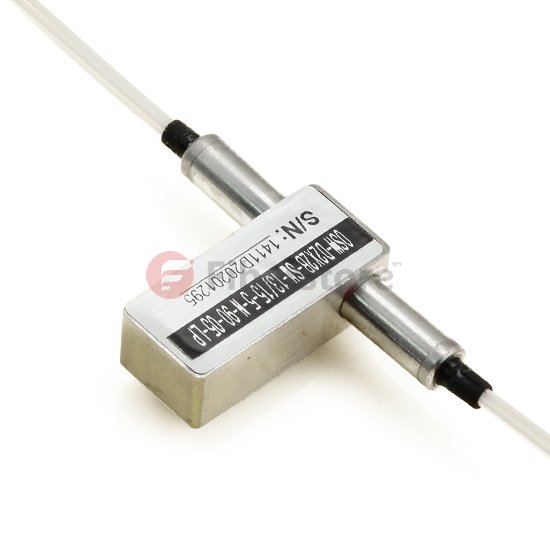December 10, 2014
With improved efficiency and lower costs, optical swiching provides the key for carries to both manage the new capacity that dense wavelength division multiplexing (DWDM) provides and gain a competitive advantage in the recruitment and retention of new customers. However, with two types of optical swiches being offered, there is a dabate over which type of switch to deploy-intelligent, optical-electrical-optical (OEO) switches, or all-optical, optical-optical-optical (OOO) swiches. The real answer is that both switches offer distinct advantages and, by understanding where and when deployment makes sense, carriers can optimize their network and service offerings.
Carries have embraced DWDM as a mechanism to quickly respond to an increasing need for bandwidth, particularly in the long-haul core network. Many of these carries have also recognized that this wavelength-based infrastructure creates the foundation for the new-generation optic network. However, as DWDM delivers only raw capacity, carries now need to implement a solution to manage the bandwidth that DWDM provides. Optical switches advantage in the recruitment and retention of new customers. To secure improved efficiency, lower cost, and new revenue-generating services, carries have at least two choices of optical swiches to control their bandwidth and rising capital expenses (CAPEX), the OEOFiber Optical Switch and the all-optical, photonic-based OOO switch, which will be discussed in complete detail in Section 10.1.3. A logical evolution path to the next-generation network must include the deployment of intelligent OEO switches to ensure that current needs are met and all-optical OOO swiches are added where and when they make sense. Therefore, there is no debate on whether carries need to deploy either OEO or OOO, but there is debate on how to optimize network and service offerings through the implementation of both switch types.
In addition, recent economic challenges have highlighted the fact that the network evolution must increase the efficiency and manageability of a network, resulting in lower equimpment and operation costs. A growing number of carriers have accepted the evoloutionary benefits of the optical switch. Carries must decide how best to implement the optical swich to gain a competitive advantage in the recruitment and retention of new customers. Promises of improved efficency, lower cost, and new revenue-generating services are being made by manufactures of two types of optical switches-the OEO switch and the all-optical, photonic-based OOO switch.
Now the following we recommend you two optical swiches from Fiberstore, they are Optical Bypass Switch, 1×2 fiber optic switch.
The Dual 2×2 Bypass Opto-Mechanical Bi-directional Fiber Optic Switch connects optical channels by redirecting 4 incoming optical signals into 4 output fibers. This is achieved using a opto-mechanical configuration and activated via an electrical control signal. The Optical Bypass Switch has integrated electrical position sensors.Based on thin film filter technology that provides a robust method of altering the light patch, this series of products has a drastically simplified platform configuration offering high reliability and low production cost. This novel design significantly reduces moving part position sensitivity, offering unprecedented high stability as well as an unmatched low cost.
Features
Compact design, Miniature size
Short switching time
Bi-directional
Low optical distortions
Low cross talk, Low Insertion Loss
Wide operating wavelength Range
Seam-seal package
Highly Stable & Reliable
Epoxy-free on Optical Path
Single mode or Multimode optional
Fail-Safe Latching and Non-latching
The 1×2 fiber optic switch connects optical channels by redirecting 1 incoming optical signals into 2 output fibers. This is achieved using a opto-mechanical configuration and activated via an electrical control signal. The switch has integrated electrical position sensors.Based on thin film filter technology that provides a robust method of altering the light patch, this series of products has a drastically simplified platform configuration offering high reliability and low production cost. This novel design significantly reduces moving part position sensitivity, offering unprecedented high stability as well as an unmatched low cost.
Optical switch is a device that enables signals in optical fibers or integrated optical circuits to be selectively switched from one circuit to another. It is mainly used in optical add/drop, optical cross connection, and optical fiber ring protection. We supply optical switches based on Mechanical Optical Switch, MEMS Optical Switch, Solid-State technology with proven reliability and the configurations are available as 1 x 1, 1 x 2, 2 x 2, etc.. Moreover, we offer non-latching, latching, single-mode and multimode versions. Our optical switches are all with high quality and ready for the FTTx applications.
Article Source: http://www.cables-solutions.com/basics-of-optic-switching.html
Posted by: kelonlau at
04:23 AM
| No Comments
| Add Comment
Post contains 730 words, total size 7 kb.
33 queries taking 0.3113 seconds, 60 records returned.
Powered by Minx 1.1.6c-pink.











